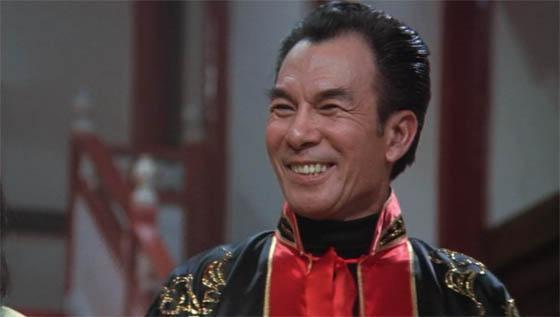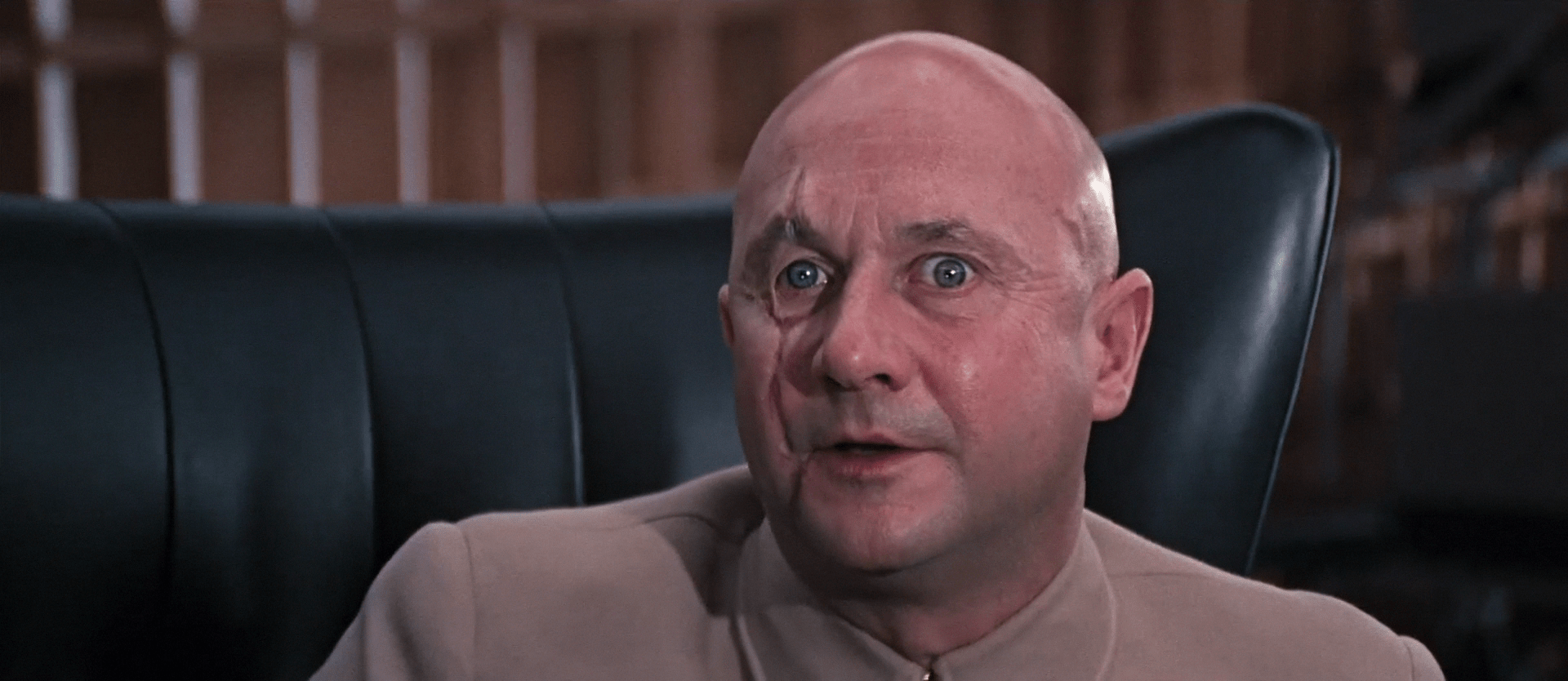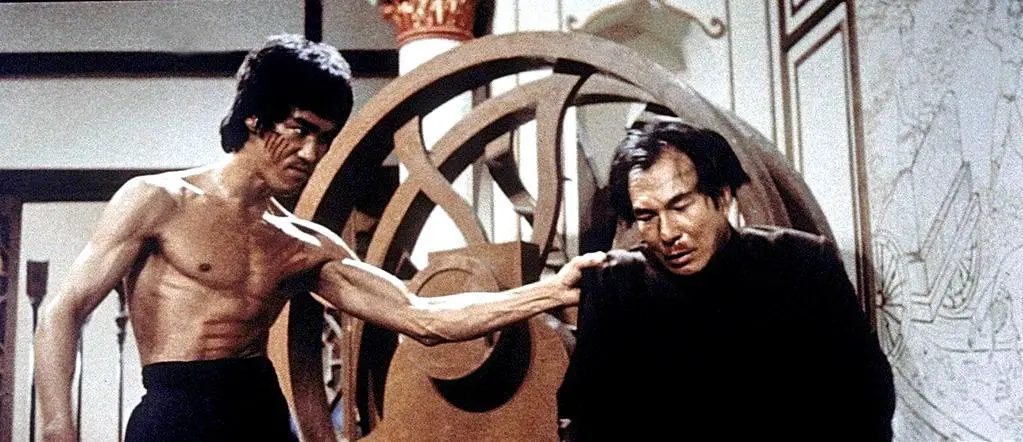What Are Similarities Between Han in “Enter the Dragon” and Iconic Bond Villain Blofeld?
Unveiling Parallels Between Two Iconic Villains.

In the realm of cinema, certain characters transcend the screen to become cultural touchstones. Enter the enigmatic Han from “Enter the Dragon” and the infamous Bond villain Blofeld. While seemingly worlds apart, these characters share fascinating commonalities that beckon us to explore the depths of their personas. Through a riveting comparison, this article unravels the intricate threads that tie together Han and Blofeld, delving into their shared traits of manipulation, ambition, and psychological warfare. Prepare to embark on a cinematic journey that reveals how even the most distinct villains can be connected by the underlying chords of human complexity.
Key Takeaways: Exploring Han and Blofeld
Before diving into the details, let’s glimpse the key takeaways from this analysis. Han from “Enter the Dragon” and Blofeld, the iconic Bond villain, exhibit striking parallels despite their different film universes:
- Masters of Manipulation: Both Han and Blofeld wield the power of manipulation to orchestrate their nefarious plans, using charm and secrecy to ensnare their foes.
- Shared Ambitions: From Han’s criminal empire to Blofeld’s global schemes, both characters aspire to wield immense power through criminal enterprises.
- Fear as a Tool: Fear is a driving force for both villains, as Han and Blofeld expertly manipulate their subjects through intimidation and psychological warfare.
- Intriguing Relationships: Han and Blofeld engage in unique psychological battles with their respective protagonists, fostering complex dynamics that go beyond physical confrontations.
- Embracing Handicaps: Both characters leverage their physical traits – Han’s prosthetic hand and Blofeld’s distinct appearance – as symbols of power and control.
Are There Any Similarities Between Han in “Enter the Dragon” and Iconic Bond Villain Blofeld?
In the realm of classic cinema, certain characters stand out not only for their individual traits but also for the intriguing parallels that can be drawn between them. This article delves into the captivating comparison between Han, the enigmatic antagonist from “Enter the Dragon,” and the iconic Bond villain Blofeld. Despite hailing from different film franchises and genres, these two characters share some surprising similarities that are worth exploring.

Han in “Enter the Dragon”
Han, portrayed by Shih Kien, is the cunning and elusive mastermind in the martial arts masterpiece “Enter the Dragon” (1973). As the host of an underground fighting tournament, Han’s outward charm conceals his sinister motives. Some resemblances between Han and Blofeld become evident upon closer examination:

Shared Mastery of Manipulation and Deception
Both Han and Blofeld are masters of manipulation. Han lures skilled martial artists to his island, enticing them with promises of wealth and glory while concealing his illicit operations. Similarly, Blofeld often employs deception to further his nefarious schemes, using his organization SPECTRE to manipulate global events for personal gain.

Mysterious Auras and Hidden Agendas
Han and Blofeld shroud themselves in mystery. Han resides on a secluded island fortress, reinforcing his aura of secrecy. Blofeld, too, operates from hidden lairs, wearing various disguises to evade detection. Their secretive natures contribute to their enigmatic personas.
Physical Handicaps as Sources of Power
A notable parallel is their use of physical handicaps as sources of power. Han’s missing hand conceals a lethal prosthetic, which he employs with deadly precision. Similarly, Blofeld’s distinct appearance, often featuring a scar and a cat, becomes an iconic symbol of his supervillain status. These traits highlight their ability to turn vulnerabilities into advantages.
Iconic Bond Villain Blofeld
Ernst Stavro Blofeld, James Bond’s arch-nemesis, has been portrayed by various actors across the Bond franchise. One of the most recognizable renditions is by Donald Pleasence in “You Only Live Twice” (1967). Let’s explore the intriguing parallels between Blofeld and Han:

Global Ambitions and Criminal Enterprises
Both characters possess grandiose ambitions. Han’s criminal empire extends to drug trafficking, human trafficking, and prostitution. Similarly, Blofeld’s SPECTRE organization orchestrates complex schemes that threaten global stability. Their shared inclination toward large-scale criminal activities aligns their villainous trajectories.
Control through Fear and Intimidation
Han and Blofeld utilize fear as a tool for control. Han’s brutal punishment of disobedient fighters instills terror among his subjects. Likewise, Blofeld’s menacing demeanor and ruthless methods strike fear into his subordinates and adversaries alike. This psychological manipulation reinforces their authority.
Intricate Bases and High-Tech Hideouts
Both characters operate from elaborate bases that reflect their sinister intentions. Han’s island fortress is equipped with hidden chambers and traps, showcasing his strategic prowess. In contrast, Blofeld’s hideouts are technological marvels, featuring advanced gadgets and surveillance systems. Their bases serve as extensions of their personalities, designed to facilitate their goals.
Comparing the Unconventional
While Han and Blofeld hail from different cinematic universes and narrative contexts, their unconventional qualities align them in unexpected ways:
Philosophical Parallels
Han’s pursuit of spiritual enlightenment and mastery of martial arts aligns with Blofeld’s cerebral pursuits. Blofeld’s complex schemes often involve psychological manipulation and philosophical ideologies, highlighting their shared penchant for intellectual depth.
Complex Relationships with Protagonists
Han and Blofeld’s interactions with protagonists are intriguingly similar. They engage in psychological battles with their respective foes, forcing heroes like James Bond and Bruce Lee’s character to navigate their cunning strategies. This establishes a unique dynamic between the villains and the protagonists.

Legacy of Villainy
Both characters have left a lasting legacy in cinema history. Han’s presence in “Enter the Dragon” solidified him as one of the greatest martial arts movie villains. Likewise, Blofeld’s recurrent appearances in the Bond franchise have earned him a spot among the most iconic villains in film history.
Men’s/women’s t-shirt bruce lee 3d printed
FAQ:
1. What are the underlying similarities between Han and Blofeld?
While Han and Blofeld originate from distinct cinematic universes, their shared traits of manipulation, ambition, and complex personalities forge intriguing connections. Han’s mastery of manipulation and concealed intentions align with Blofeld’s strategic deception. Both characters possess an enigmatic aura, keeping their true agendas hidden from those around them. Moreover, their unique physical characteristics, such as Han’s prosthetic hand and Blofeld’s scar, serve as symbols of their power and intimidation. These resemblances transcend their genres and make for an absorbing comparison.
2. How do Han and Blofeld compare in terms of their criminal enterprises?
Han and Blofeld both have an inclination toward extensive criminal enterprises, albeit in different contexts. Han’s criminal empire spans activities like drug trafficking and prostitution, solidifying his status as a powerful crime lord. On the other hand, Blofeld’s SPECTRE organization orchestrates intricate global schemes for personal gain. While Han operates on a more localized scale, both characters exhibit a penchant for large-scale criminality, underscoring their shared inclination toward dominance.
3. What role does fear play in the dynamics of both characters?
Fear is a vital tool for both Han and Blofeld in maintaining control over their subjects. Han’s ruthless punishments and reputation for brutality create an atmosphere of terror among fighters and followers. Similarly, Blofeld’s menacing presence and calculated cruelty generate fear among his subordinates and adversaries. This psychological manipulation is a hallmark of their villainous personas, and it highlights their shared strategies for asserting dominance.
4. How do Han and Blofeld interact differently with their respective protagonists?
Han and Blofeld engage in unique psychological battles with their respective protagonists. Han uses his charm and allure to draw skilled fighters into his web, setting the stage for their inevitable confrontation. In contrast, Blofeld’s cat-and-mouse interactions with James Bond showcase his intellectual prowess and psychological manipulation. Both villains challenge their adversaries in distinct ways, reflecting their complex personalities and strategic thinking.
5. Can their physical handicaps be seen as sources of power?
Indeed, Han’s missing hand and Blofeld’s distinctive appearance, including his scar and cat, are intriguing parallels. Han’s prosthetic hand conceals a deadly weapon, highlighting his ability to transform a vulnerability into an advantage. Blofeld’s unique appearance becomes a symbol of his supervillain status, contributing to his aura of intimidation. Both characters demonstrate how embracing their physical attributes can augment their power and influence.
6. How do Han and Blofeld’s bases reflect their personalities?
Han and Blofeld’s bases serve as extensions of their characters. Han’s secluded island fortress and its hidden chambers mirror his secretive nature, while the traps within showcase his cunning. Blofeld’s high-tech hideouts, equipped with advanced gadgets, embody his sophisticated intellect and resources. These bases amplify their villainous traits, emphasizing their strategic brilliance and complex identities.
7. What philosophical connections can be drawn between the characters?
Han’s pursuit of martial arts mastery and spiritual enlightenment aligns with Blofeld’s cerebral inclinations. Blofeld often employs philosophical ideologies to drive his global schemes, showcasing a shared penchant for intellectual depth. Both characters navigate intricate belief systems to further their goals, revealing the philosophical layers beneath their villainous exteriors.
8. How have Han and Blofeld left a mark on cinematic history?
Han’s portrayal as a martial arts villain in “Enter the Dragon” has solidified his status as a legendary antagonist in the genre. Similarly, Blofeld’s recurrent appearances across the Bond franchise have established him as an iconic supervillain. Their enduring legacies in cinematic history showcase their lasting impact and the timeless appeal of complex antagonists who challenge the protagonists both physically and mentally.
9. How do Han and Blofeld differ in terms of their secretiveness?
While both Han and Blofeld are shrouded in mystery, their secretiveness manifests differently. Han’s secluded island and fighting tournament mask his illegal operations, showcasing his calculated approach to maintaining his facade. In contrast, Blofeld’s disguises and hidden lairs reflect his elaborate attempts to evade detection. Their distinct methods of secrecy contribute to their individual enigmatic personas.
10. What can we learn from the comparison between these two characters?
The comparison between Han and Blofeld underscores the universal appeal of complex villains in storytelling. Despite their differing origins and narratives, their shared traits of manipulation, ambition, and psychological warfare highlight the enduring fascination with nuanced antagonists. Both characters demonstrate how multifaceted villains can elevate narratives, engaging audiences on intellectual and emotional levels while leaving a lasting imprint in cinematic history.
Conclusion:
As the curtain falls on this exploration, we’ve journeyed through the captivating world of Han and Blofeld, two villains who, despite their differences, share a web of parallels that intrigue and captivate. Their mastery of manipulation, grand ambitions, psychological prowess, and enigmatic personas transcend the boundaries of their cinematic universes. Through this comparative study, we’ve gained insights into the complexities of villainy and the enduring appeal of characters that challenge, provoke, and leave an indelible mark on the cinematic landscape. Just as protagonists define the heroes we admire, it is the villains like Han and Blofeld that remind us of the captivating shades of darkness that make stories truly unforgettable.












One Comment